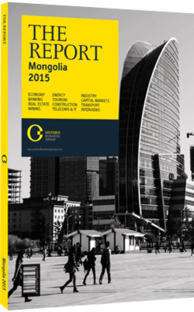J. Oyungerel, Chairman, Petrovis: Interview

Interview: J. Oyungerel
How has the economic downturn affected demand for petroleum products?
J. OYUNGEREL: Mongolia’s mining sector is heavily dependent on demand from China, especially for coal, which has decreased sharply over the past two years. As a result, the petrol market has seen a substantial reduction in wholesale volumes. That said, this negative trend has been largely offset by a sustained increase in demand on the retail side; hence, Mongolia imported more than 1.15m tonnes of petroleum products in 2014 compared to 1.22m tonnes in 2013. We expect these trends to persist in 2015, with the wholesale market continuing to decline as a result of the poor outlook for coal exports to China and with the retail market growing in tandem with the population, although perhaps at a slower rate given the general downturn in the domestic economy.
Despite these figures, the potential for long-term growth in the Mongolian petrol market is very high. In just five years, between 2009 and 2013, demand has grown 90% – nearly doubling. And given that 60% of consumption is diesel used for the mining sector, if the slowdown in certain mining sectors – such as coking and thermal coal exports, iron ore and other minerals involved in steel manufacturing – can be reversed, Mongolia should see considerable, sustained growth in demand for petroleum products for many years to come. To realise this, however, we need clear, stable laws and regulations that support foreign investment.
What has been the impact of the government’s Price Stabilisation Programme on the market?
OYUNGEREL: There has been an unfortunate tendency in Mongolia for any slight increase in the retail price of petrol to trigger price rises across all types of commodities and services, even those that do not have a cost component directly affected by petroleum prices. This leads to inflation and general hardship among the population. To help maintain a more level price, or at least lessen the impact of sudden spikes – and in the absence of any direct legislation to regulate prices – the government worked with petroleum importers and distributors to devise the price-stabilisation programme.
While the price of imported petroleum is largely determined by suppliers, this programme tries to alleviate the other main drivers of retail prices – the exchange rate and the import financing cost – by having the Bank of Mongolia allocate low-interest loans to importers at special exchange rates. When import prices rise, the government also offers tax relief options such as a decrease in Customs and excise taxes. When prices fall, the opposite occurs.
So far the programme has been fairly successful, with the retail price remaining relatively stable over the past two years. That said, it has put a great deal of strain on the participants and will require adjustments if it is to continue over the coming year – although I expect that it will come to an end sometime in the near future and that prices will have to rise as a result.
In general, while the programme has had a positive overall impact for the last few years, I believe we should move towards a more market-oriented price as this is more sustainable in the long run.
How big is Mongolia’s potential as an oil producer?
OYUNGEREL: In my view, Mongolia has significant potential in this area, which is very important to develop in terms of energy security. While oil exploration has intensified over the past five years and the country is already producing and exporting crude to China from its south-eastern provinces, it remains largely unexplored. Western Mongolia in particular is one the last great frontier areas in the world left for exploration, and could harbour large-scale reserves if aggressively explored and developed. There is also considerable potential in unconventional sources like oil shale. To develop these resources, however, we need foreign investors with know-how and advanced technologies. Luckily, the recent changes to the petroleum law should help make investment in that space much easier.
You have reached the limit of premium articles you can view for free.
Choose from the options below to purchase print or digital editions of our Reports. You can also purchase a website subscription giving you unlimited access to all of our Reports online for 12 months.
If you have already purchased this Report or have a website subscription, please login to continue.

